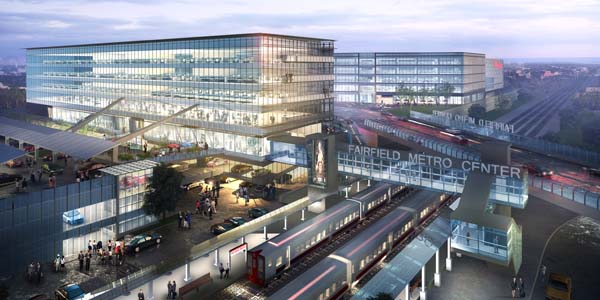
One year after the Fairfield Metro Center railroad station opened to commuters, a planned 1 million-square-foot mixed-use development that was to accompany it has yet to get underway.
With financing for the project largely in place and most approvals in hand, Kurt Wittek, principal of developer Blackrock Realty L.L.C., said the biggest remaining hurdle is finding the right tenant to anchor the project.
But finding that anchor ”” and then assembling a strong supporting cast of tenants around it ”” is no small feat in what has been a trying economy for the Fairfield County real estate market, Wittek said.
“Clearly the most prevalent component of the local office market in Fairfield County is the financial services, and that”™s obviously a sector that was fairly hard hit by the recession,” he said.
With financial firms in no rush to hire or expand, Wittek said the market is favorably geared toward buyers and tenants.
“All of the office landlords are essentially competing for the same deals,” he said. “So yes, given the employment outlook and what companies seem to be doing in their expansion or contraction thinking ”¦ it”™s not great news for either buildings with large vacancies or certainly projects like mine that need some level of commitment to come out of the ground.”
Tom Pajolek, executive vice president of real estate brokerage CBRE Inc.”™s Stamford office, said some of the county”™s most promising real estate developments are being held up by the economy.
“Theoretically,” Pajolek said, the planned Fairfield Metro Center project “is a very attractive development ”” it”™s just that they have to find that anchor tenant to commit to a large amount of space to allow them to break ground and go vertical.”
Pajolek echoed Wittek, saying the slow recovery of the county”™s financial services industry has affected developers and property owners.
“Historically, Fairfield County, and particularly lower Fairfield County, has been a very mature market,” he said. “So a lot of the growth has been organic growth (involving) a lot of the people who have been here for a while and who need additional space. At the end of the day, the large financial services users are not gobbling up large amounts of space today.”
But in the case of developments such as the Fairfield Metro Center and other transit-oriented developments from Stamford to Norwalk to Bridgeport, proximity to mass transit represents a decided advantage, Pajolek said.
“Time has shown us that projects that are in proximity to mass transit have had higher occupancy rates than those that are not,” he said.
In Greenwich, Pajolek said, the overall occupancy rate for Class A buildings is 79 percent. For buildings within walking distance of the Greenwich train station, he said, the overall occupancy rate is about 83 percent.
Likewise, in Stamford, the overall Class A occupancy rate is 77 percent, while for buildings within walking distance of the train station, the occupancy rate is 85 percent, Pajolek said.
“There are additional projects that are planned in Norwalk and in Fairfield, which I think can be very viable, but it”™s just a question of the economy cooperating at this point,” he said. “Demand has slackened considerably over the last year and a half. ”¦ We need employment numbers to pick up to help with the demand side of things.”
Wittek said Blackrock Realty is seeking a commercial tenant to lease about 60,000 square feet of space in the concourse building, which would attach directly to the train platforms.
“That would obviously be unique in the marketplace, but again, absent some commitment, we”™re not going to build that building,” Wittek said.
He said Blackrock, which is a joint venture of Stamford-based Wittek Development and New Rochelle, N.Y.-based Rugby Realty Co. Inc., has already spent about $3 million to lay the foundation of the planned concourse building and to make other preparations.
In all, the developer, the town of Fairfield, the state of Connecticut and the federal government have spent more than $40 million on the project, which currently includes a train station and a 1,470-space commuter parking lot.
The developer”™s initial plans call for a 35-acre complex built around the train station comprising 1 million square feet of commercial office space, about 30,000 square feet of retail space, a hotel and a residential apartment complex.
Wittek said the project would cost “in the vicinity of $400 (million) to $500 million.”

















Comments 1